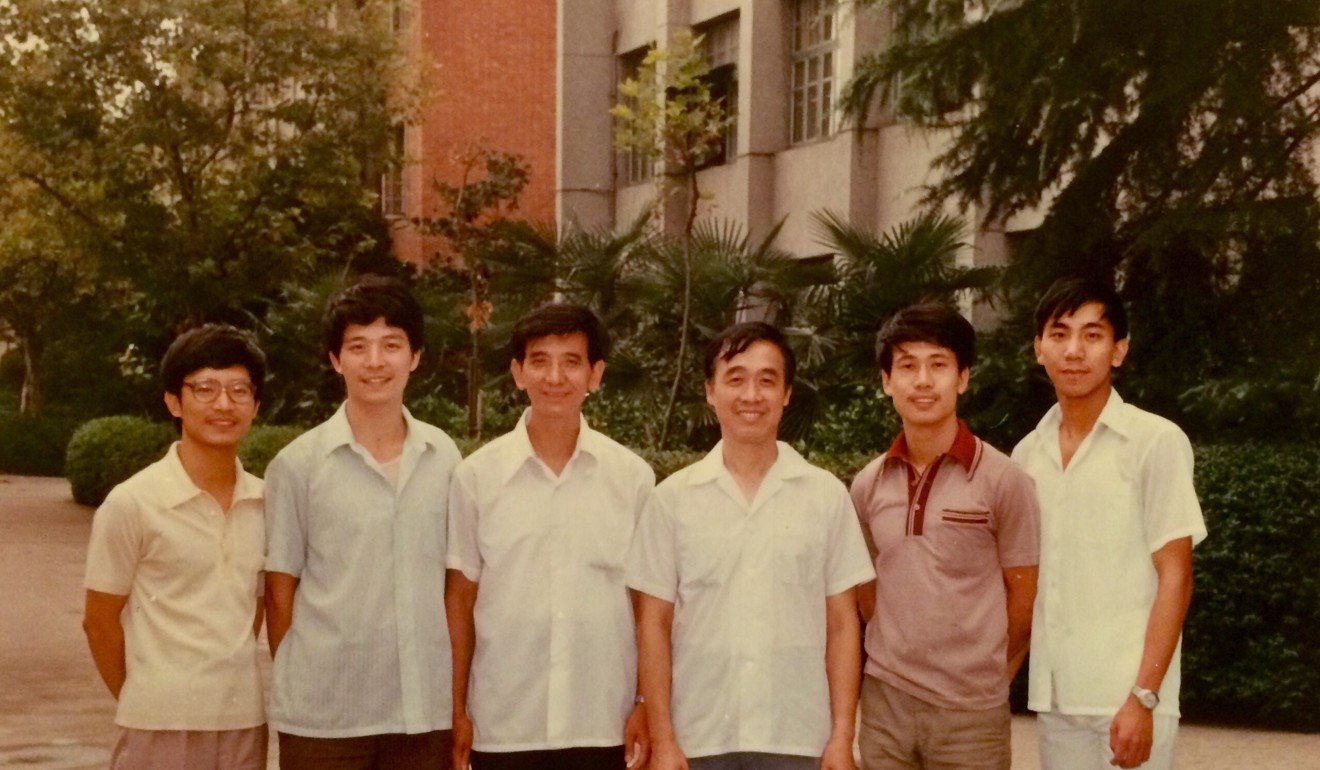
During the Cultural Revolution he had to toil in the fields, now he’s leading China’s biggest ever Antarctic mission
- The man leading China’s biggest ever mission to Antarctica nearly missed out on going to university
- Chen Dake’s life was transformed after a ban on ‘bourgeois’ figures studying was lifted in 1977 – but he still felt it safer to study science than humanities
When Chen Dake steps onto the Antarctic ice as the head of China’s biggest ever mission to the South Pole he will have travelled a long way from the rice fields of rural Hunan where he used to toil 40 years ago.
Chen was one of the millions of Chinese people whose lives were transformed by the end of the Cultural Revolution and the decision to reopen the country’s universities.
He was one of around 5.7 million students who rushed to take the college entrance exam in the winter of 1977 – a decade after universities were closed at the height of the revolutionary fervour.
The following spring Chen entered Hunan Normal University to study physics, but even then his choice of subject was coloured by the political climate of the era.

“Well, as a kid I was always more interested in literature and history than science, though I did well in all disciplines in school,” Chen told the South China Morning Post.
“Many thought I could make a name for myself as a writer or historian.
“However, right after the devastating Cultural Revolution, people were still afraid of doing anything ‘cultural’ or ‘social’. Science was deemed a much safer choice.”
The decision has paid off as Chen, now a renowned oceanographer, is leading a team of 350 researchers on board the icebreaker Xue Long, which means Snow Dragon, on a mission to expand China’s presence at the poles.
The team sailed from Shanghai in early November with a range of tasks to fulfil, including the construction of a permanent airstrip near China’s Zhongshan research station in the continent’s east.
The expedition team will install research equipment at Taishan Station, one of four Chinese research centres on the continent, and survey and map Inexpressible Island – one of the most inhospitable places on Earth – to prepare for the construction of China’s fifth station there.
China’s ‘Sea Dragon’ underwater robot reaches record depth on test dive
The new research station on the island will allow China’s to collect ocean dynamics data from the Southern Ocean, the last waters around the Antarctic continent that they have yet to survey.
By studying ocean dynamics and temperature fluctuations, Chen’s main area of research, the team will be better placed to analyse the impact of climate change.
They will also help to set up a reserve for the island’s penguins.

China is one of 40 countries with research bases in Antarctica, but until recently Chinese scientists have lagged behind countries such as the United States.
But Chen said a recent influx of funding had helped China to catch up.
“The gap between China and the USA in oceanic research is not nearly as wide as it used to be in the 1980s and 90s, and we will continue to catch up, at a rate similar to that in other fields of scientific research.”
China breaks the Arctic ice with launch of new research vessel Snow Dragon II
He said the rapid pace of Chinese development in recent years had included a significant increase in its capacity for carrying out oceanic research – in particular the launch of Xue Long and the Jiao Long deep-sea submarine.
Jiao Long, which roughly translates into Sea Dragon, is the first such vessel designed and built in China, and can go down 7,000 metres (23,000ft), deeper than any other manned vessel.
Its range means Chinese scientists will be able to study and explore the rich natural resources at the bottom of the ocean.

But Chen’s life appeared to be on a very different path when he left high school in Changsha, the capital of Hunan province, in the mid-1970s and was forced to spend three years working in the paddy fields of central China.
Because his parents had been intellectuals – a group regularly targeted during the Cultural Revolution – his “bourgeois” background prevented him from going to university.
After initially closing all the country’s universities, Mao Zedong had allowed a partial reopening a few years later but admission was based on ideological, rather than academic, criteria that favoured students from peasant and proletarian families.
Most Chinese scientists write papers to get promoted, survey finds
A famous story from that era illustrates that climate of the time.
Zhang Tiesheng, a farmer in northeast China’s Liaoning province, was admitted to college in 1973 despite his failure to answer a single question on chemistry and physics.

But Mao’s death in the 1976 heralded an era of sweeping change.
As part of the reform process, the new leadership decided to reverse the policy on university admissions, allowing Chen and millions of others to take the entrance exam for the first time in the winter of 1977.
“I was sent to the countryside after high school and toiled in the rice fields for three years before getting back to the city and entering college,” Chen said.
“I barely had time and energy to prepare for the entrance exam, but I guess that’s probably true for almost everyone who took that exam.
“I remember that almost every young person in the countryside where I worked took the exam.”
Back then only 5 per cent of the exam candidates, around 270,000 people, succeeded in gaining entrance to university – a far cry from the present-day 74 per cent success rate.
Chen was one of the lucky ones, and after studying at Hunan Normal University and the Second Institute of Oceanography, went on to complete his PhD at the State University of New York at Stony Brook.
He spent around two decades in the United States, a period of breakneck change in China, before being lured back in 2006.
He returned to lead the newly established national laboratory of ocean dynamics in Hangzhou, a decision he explained by saying: “I had seen the rapid economic development in China and I was sure it would have a strong impact on its scientific research. I simply didn’t want to be a bystander and miss all these wonderful activities.”

